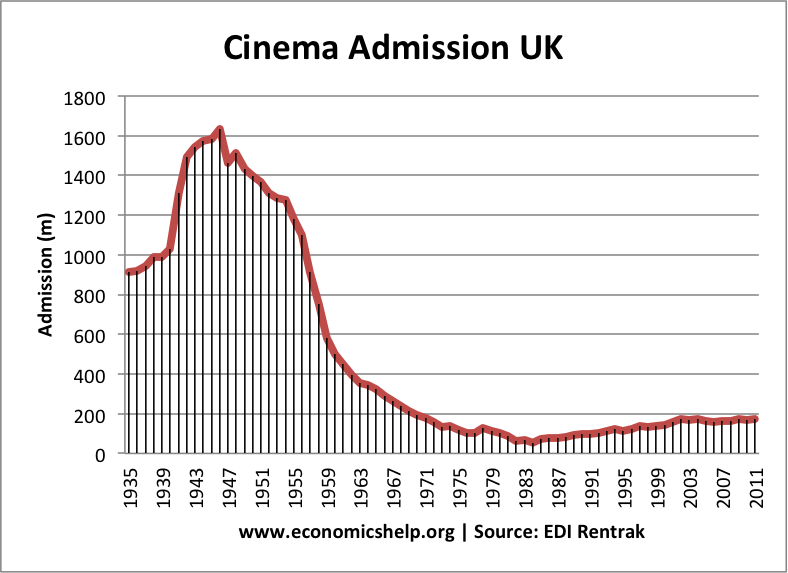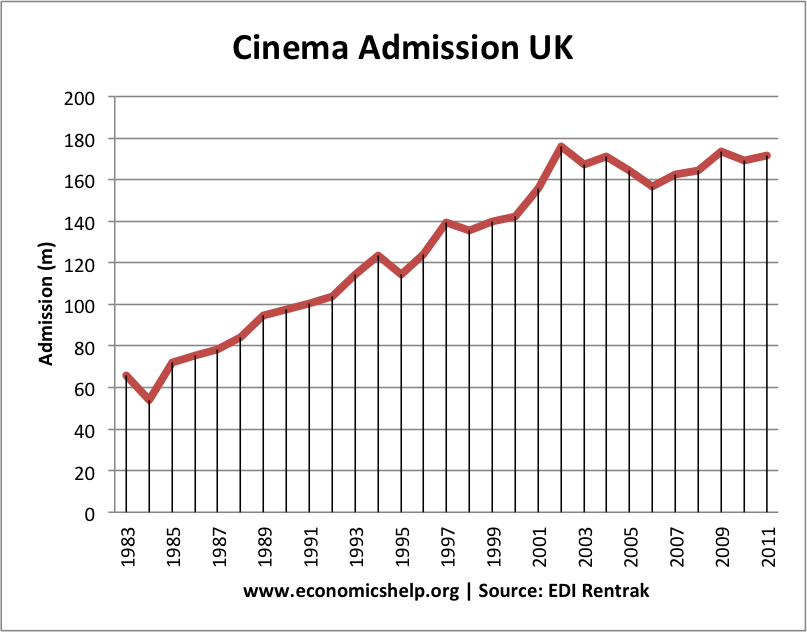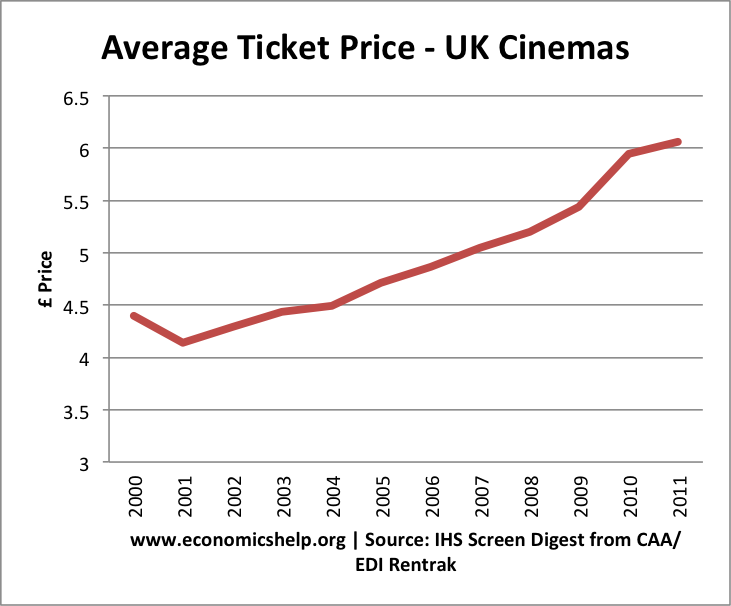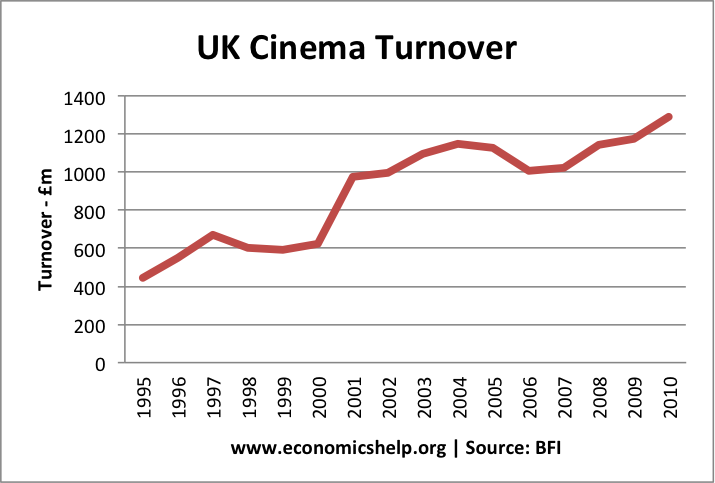
Cinema admissions in UK 1935-2011
In the 1930s, the cinema was one of the main forms of entertainment in the UK. During the war years, and post-war austerity of the 1940s, cinema-going reached a peak at over 1.64 billion admissions in 1946.
After this postwar peak, there was a gradual decline in the 1950s, before a dramatic drop throughout the 1960s and 1970s.
By 1984, annual cinema admissions had fallen to a low of just 54 million. It seemed a classic example of a product life cycle that was coming to the end.
However, just as people were writing the obituaries of the humble cinema, since 1984 there has been a notable turnaround in the popularity of the cinema, with annual attendances increasing to just under 180 million. It’s still a far cry from the 1940s, but it’s evidence that new technology doesn’t have to mean the end of ‘traditional old media’.
Why was Cinema so Popular in the 1940s?
- There were few other sources of entertainment. No TV, no internet. The cinema was the default choice for young people looking for some escapism.
- In an era of little technology, going to the cinema with big screens was quite a visual feast and made a welcome escape from long hours on your daily job.
Why did The Cinema Decline so rapidly in the 1960s, 1970s and 1980s?
- The growth of TV ownership. People could watch films or other television for free.
- With the growth of car ownership, people had greater choice of less traditional entertainment
- After the 1970s, the growth of VHS and video rental nearly killed the cinema industry. It now became fashionable to stay at home, rent the movie of your choice and save the money of going to the cinema.
A remarkable turnaround since 1984

In 1984, few would have predicted that cinemas would have made a strong recovery and that it would be video rental on the way out. Cinema attendance has continued to increase despite – rising prices, on-demand TV movie channels, the growth of internet movie downloads, and the growth of widescreen TVs which gives many people the opportunity to have a mini-cinema in their own house.
The revival of Cinema attendance since 1984?
- Change in cultural preferences. People can download any film they want from the internet. But, in an era of spending most of your time on your personal computer, perhaps people like the opportunity to get out of the house and enjoy a film, without getting distracted by instant messages on your computer.
- Cinema income elastic. The decline of the cinema in the 1970s seemed to be due to cheaper alternatives (renting video from home). However, with rising incomes, the cost of going to the cinema is not really a deterrent. Even though the price of the cinema has increased above inflation, demand has continued to rise. £7 is still considered cheap for an evening’s entertainment.
- The growth of multiplex cinemas which are easily accessible by car and also offer a wider choice of films.
- New technology. Digital cinema screens and 3D screens have offered a new dimension to going to the cinema.
- There has been an even bigger growth in the wider movie market. DVD sales and online films have grown even faster than cinema attendance. Cinemas have benefited from the growth in the movie market.
Inflation Busting Price Increases

Turnover

UK Cinema turnover has grown from just over £400m in 1995, to £1.3bn in 2010.
Other notes about Cinemas and the Movie Market
- The DVD market represented 56 percent of total movie spending in 2006 at £1,655m.
- The second biggest market is pay TV, with an estimated £673m spent in subscription fees to Premium Movie channels (Sky).
- The UK cinema market is being dominated by three major UK exhibitors, Cineworld, Odeon UCI, and Vue. In total, they account for over 70% of the total market box office receipts and 60% of screens. (An example of Oligopoly with a three-firm concentration ratio of 70%)
- The rest of the market is represented by smaller multiplex operators and independents which tend to operate non-multiplex cinemas (less than five screens). (Cineworld)
- The film with the greatest earning is Skyfall (over £100m by Jan 2012). Beating Avatar into number 2, and Toy Story 3 in third place.
Related
UK Cinema takes £1bn in 2011 at BBC

They close local cinema. Not some guy sitting there selling carrot or milk maybe sometime. Where do I now go? They shutting down the screen and film cannot be seen.